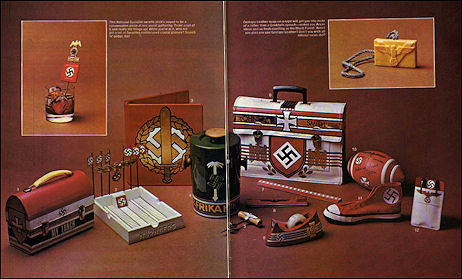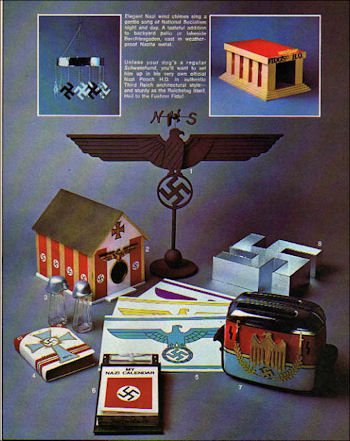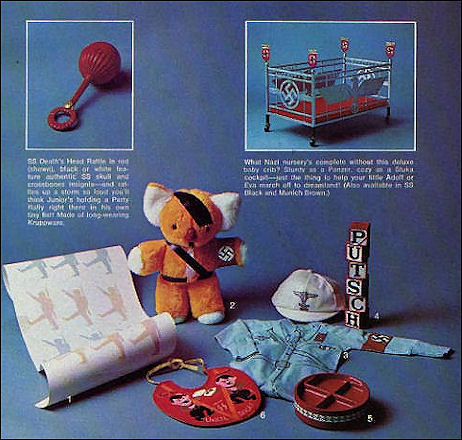TMZ has posted a year-old Nazi-garbed photo session with Michelle McGee, the lady who had a thing with Jesse James (Sandra Bullock‘s estranged husband) and then ratted him out to In Touch magazine for $30 grand.

I don’t particularly care about this — James got what he deserved — but the photos took me back to a 1973 industrial-design photo piece in the old National Lampoon called “Nazi Regalia for Gracious Living.”
The article was written by Bruce McCall with photographs by Dick Frank. The product was “manufactured” by Harry Fischman, Alan Rose, Celia Bau, and David Kaestle. Elizabeth Benett did the illustrations.
The satire in “Nazi Regalia for Gracious Living” was aimed at American middle-class values. (I think.) I now believe it was feeding off the same risque cultural pollen that began to manifest about a year later in various arthouse films (as well as some from the sexploitation field). The common idea/attitude in these films was that under the uniforms Nazis (or Italian fascists) had heavily suppressed sex lives with gay, S&M and B&D inclinations.
Tinto Brass‘s Salon Kitty, Liliana Cavani‘s The Night Porter, Pier Paolo Pasolini‘s Salo and Bernardo Bertolucci‘s 1900 all worked this into their narratives. I remember Andrew Sarris describing this cinematic trend as “homosexual Nazi chic.”
Apparent common consensus still insists that the ultimate Nazi sexploitation film was David F. Friedman‘s Ilsa, She-Wolf of the SS.












